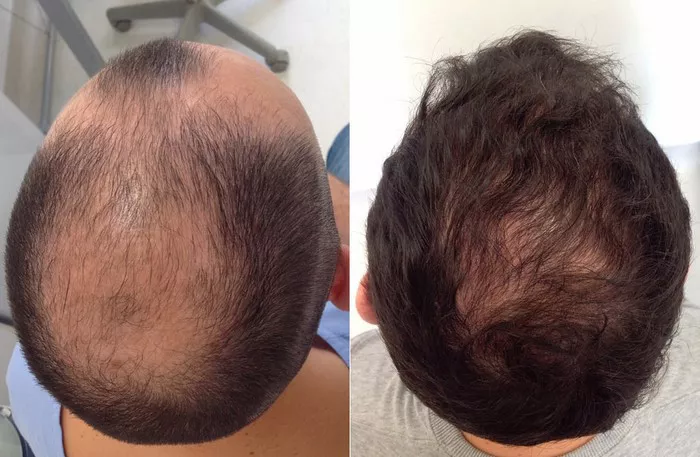Undergoing a hair transplant is a significant step towards restoring your hairline and boosting your confidence. However, post-surgery care is crucial for ensuring optimal healing and the best results. One of the key aspects of aftercare is protecting your scalp, especially during the initial healing phase. Wearing the right hat can provide comfort, sun protection, and discreet coverage. This article will explore the best hats to wear after a hair transplant, important factors to consider, and tips for ensuring a smooth recovery.
Understanding the Healing Process After a Hair Transplant
The Importance of Post-Operative Care
After a hair transplant, your scalp will be sensitive and may experience redness, swelling, and minor discomfort. Proper care is essential to facilitate healing and minimize the risk of complications. Protecting your scalp from sunlight, dirt, and other environmental factors is crucial during this time.
Typical Healing Timeline
Days 1-3: Swelling and tenderness are common. Avoid any pressure on the scalp.
Days 4-7: Scabs may form; it’s essential to avoid scratching.
Weeks 1-2: Most patients return to normal activities, but the scalp remains sensitive.
Weeks 3-4: Shedding of transplanted hair may occur, which is normal as new hair begins to grow.
3-6 Months: New hair growth becomes noticeable.
Why Wearing a Hat Is Beneficial
1. Sun Protection
A key benefit of wearing a hat after a hair transplant is protection from harmful UV rays. Sun exposure can lead to skin irritation and hinder the healing process.
2. Discreet Coverage
For those who prefer to keep their procedure private, a hat can provide an easy way to conceal any visible signs of the transplant.
3. Comfort
Wearing a comfortable hat can help shield the scalp from environmental elements, reducing irritation during the initial healing phase.
Key Features to Look For in Post-Transplant Hats
When choosing a hat to wear after a hair transplant, consider the following features:
1. Material
Opt for breathable, soft fabrics that won’t irritate your scalp. Natural materials like cotton and bamboo are excellent choices for comfort.
2. Fit
A loose-fitting hat is ideal to avoid pressure on the scalp. Adjustable straps or stretchable materials can help achieve a comfortable fit.
3. Brim Size
A wide brim offers better sun protection, shielding your face and neck while keeping the scalp shaded.
4. Style
Choose a style that makes you feel confident and comfortable. From baseball caps to sun hats, the right style can boost your mood during recovery.
Top Hat Options for Post-Hair Transplant Care
1. Baseball Caps
Features:
Made from breathable cotton or polyester.
Adjustable fit.
Wide variety of styles and colors.
Why They’re Great: Baseball caps are a classic choice for casual wear. They provide sun protection while allowing airflow to the scalp. Ensure the fit isn’t too tight to avoid discomfort.
2. Sun Hats
Features:
Wide brims for maximum sun protection.
Made from lightweight, breathable materials.
Often includes moisture-wicking technology.
Why They’re Great: Sun hats are perfect for outdoor activities during recovery. Their wide brims protect your face and neck from UV rays while providing ample ventilation for the scalp.
3. Beanies
Features:
Soft and stretchy material.
Comfortable fit.
Provides warmth during colder months.
Why They’re Great: Beanies are ideal for cooler weather. They provide warmth while being gentle on the scalp. Look for cotton or bamboo options that won’t irritate sensitive skin.
4. Bucket Hats
Features:
Wide, downward-sloping brim.
Made from lightweight fabric.
Comfortable and stylish.
Why They’re Great: Bucket hats offer a trendy option with excellent sun protection. Their relaxed fit and breathable fabric make them suitable for post-transplant wear.
5. Visors
Features:
Open top for breathability.
Adjustable strap for a secure fit.
Provides sun protection for the face.
Why They’re Great: Visors are great for those who want sun protection without covering the entire head. They allow for maximum airflow and comfort, making them suitable for various activities.
Care Tips for Your Hat
1. Keep It Clean
Regularly wash your hat according to the manufacturer’s instructions to prevent dirt and bacteria buildup. Opt for gentle detergents to protect the fabric.
2. Store Properly
Store your hats in a cool, dry place to maintain their shape and integrity. Avoid folding them in a way that could cause creasing or damage.
3. Avoid Tight Fits
Ensure your hats are not too tight, as this can cause discomfort and potentially affect healing. Adjustable hats are ideal for maintaining comfort.
Conclusion
Choosing the best hat after a hair transplant is an essential aspect of your post-operative care. By considering materials, fit, and style, you can find a comfortable and protective option that suits your needs. Whether you opt for a baseball cap, sun hat, or beanie, the right headwear will help you navigate the recovery process with confidence. Remember, proper care and protection are key to achieving the best results from your hair transplant. Enjoy your journey towards a fuller head of hair!
Related topics:
- Can Hair Transplant Fail? Knowing the Risks and Realities
- How to Sleep After a Hair Transplant: Essential Tips
- What to Expect 3 Months After a Hair Transplant: A Full Guide


